
Volunteer firefighters, including Chief Philip Stittleburg (in white helmet), battle a structure fire in La Farge, Wisconsin. (Photo courtesy of Philip Stittleburg)
Almost 300 years after U.S. founding father Benjamin Franklin established the very first volunteer fire department, the time-honored American tradition of unpaid good Samaritans banding together to save homes and properties in their community is in danger of being extinguished.
Franklin founded The Union Fire Company with 30 volunteers in 1736. In addition to Franklin, famous Americans who served as volunteer firefighters include George Washington, Thomas Jefferson, John Hancock and Paul Revere.The Union Fire Company helped cement Franklin’s legacy as a civic leader, and furthered the notion that instead of looking to the government for solutions, the community could come together and help itself.
However, modern lifestyles, including heavier time demands on adults and many more extracurricular activities for young people, have slowly chipped away at the volunteer firefighter ranks.
“It’s a sign of the times,” said Dan Schmidt, a spokesperson for the Fairfax County Fire & Rescue Department in Virginia, where the vast majority of firefighters are paid professionals. “People are busy; they have children, they have jobs. They have commitments.”
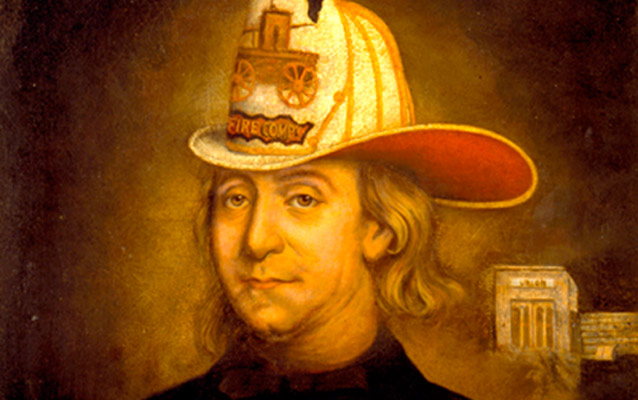
Benjamin Franklin in a Union Fire Company uniform in front of the Union Fire Company building.
(c. 1850 by Charles Washington Wright, Smithsonian Institution Archives)
There are more than a million firefighters in the United States. Volunteers comprise 70 percent of them, according to the National Volunteer Fire Council. A 2011 study shows these volunteers save the United States billions of dollars with their donated time.
While the free time people have is shrinking, the demands on volunteer firefighters are growing. Volunteers require the exact same training as career firefighters, all of it done on their own time.
“We are professionals. We are unpaid professionals,” said Philip Stittleburg, a retired criminal prosecutor who is the volunteer fire chief in La Farge, Wisconsin, as well as chairman of the National Volunteer Fire Council. “The level of training is typically very similar. The level of dedication is very similar. There is not a paycheck that motivates us to do the job, but I am sure that is not the only thing that motivates the career firefighter either.”
The majority of U.S. fire departments – 20,050 out of 30,100, according to a 2012 report – are all volunteer. These are critically important in smaller communities, which rely almost entirely on volunteers. However, the number of volunteer firefighters has declined by 13 percent since 1984.
Attracting young people is the biggest challenge. Volunteer firefighters are aging out of the job, according to Stittleburg, who says the median age is about 40 years old.
That’s a challenge facing the Enders Volunteer Fire and Rescue Company in Berryville, Virginia. Of the handful of volunteers who gathered for a recent training session, only one was a volunteer who didn’t aspire to become a career, meaning paid, firefighter.
“Typically, we get them in, we train them and they move on,” said Enders Volunteer Fire Chief Harold Rohde, a civil engineer by profession. “Hopefully, they come back.”

Volunteer Fire Chief Harold Rohde (far right) and volunteer firefighter Jacob Koon (far left) during a fire training exercise at the Enders Fire Company in Berryville, Virginia.
Jacob Koon, 16, started volunteering in January, as soon as he was old enough.
“It’s an adrenaline rush, just the fact of being there and helping,” he said, adding that he hopes to transition from volunteer to career as soon as he’s able. “You got to make a living somehow…you start out volunteering and once you get into career, you know more because you started out as a volunteer. It’s like getting a jump start on something.”
It’s not just the time commitment that’s a challenge; the heavy life-and-death responsibility also weighs heavily.
“Volunteering is kind of a liability,” said Logan Large, 22, who’s been volunteering for five years and plans to become a career firefighter. “You can hurt someone doing this if you don’t do it right. It’s someone’s life in your hands. When you’re here, you have to be 100 percent into it. You have to know what you’re doing.”
Some volunteers aspire to challenges the local volunteer department can’t provide. Zayna Elhady, 15, has been hanging around the firehouse and plans to become a volunteer as soon as she turns 16.
“Firefighters help people at their worst time, when they need the most help,” she said, “and I think that’s really amazing.”
Her goal is to become a career fighter so she can eventually work with specialized teams who travel overseas for disaster relief, an opportunity not afforded to volunteers.

Volunteer firefighter uniforms at the ready at the Enders Volunteer Fire Company in Berryville, Virginia.
Firefighter unions sometimes add to the pressure by warning career firefighters against volunteering during their off hours.
Jerry Blaylock, 33, a longtime volunteer with no career firefighter ambitions, says there are ways to attract and retain volunteers.
“You make it interesting for them, you’ll keep them around,” Blaylock said. “Make it fun. If it’s not fun, people don’t come back. It’s building the friendships, the camaraderie…if you don’t want to be around the people, you’re not going to come back. That’s a big part of it.”
Berryville is a fast-growing community and Chief Rohde sees the potential for a fresh crop of volunteers.
“We run a lot of calls and when you only have a handful of people who are the ones responding to it, they tend to get burned out,” he said. “You go many nights without sleep. If you can get more people involved, I think we’d have more fellowship down here and also I think we could lighten the load on the volunteers.”
The task of recruiting and retaining volunteers for Enders and its surrounding fire stations falls to Frank Davis, director of Fire and EMS (Emergency Medical Services) for Clarke County, Virginia. While many systems choose to throw money and career people at the problem, Clarke County is looking for a way to boost the volunteer system, an endeavor which requires adapting to changing times.
“Many volunteer fire stations are stuck in the old ways,” Davis said. “You have to open up a little bit.”
And that could mean a change in approach.
“It starts with the leadership. They need to communicate real well with their volunteers and take what they can get from each individual,” Davis said. “We haven’t adjusted to if someone can only give you one or two nights a week.”
Boosting the volunteer system is a delicate balancing act, where the older firefighters must understand there’s still a place for them, while also accepting that the young firefighters might not have as much time to give.
By combining the best of the old ways with a new approach, Davis and others like him hope to preserve Benjamin Franklin’s notion of people helping each other simply for the good of society, an enduring American value embodied in America’s volunteer firefighters.


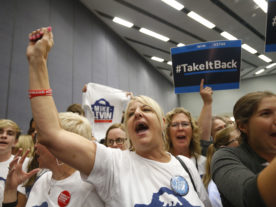


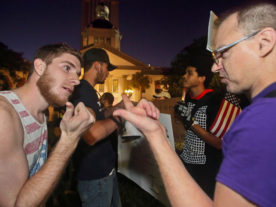

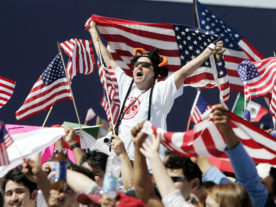
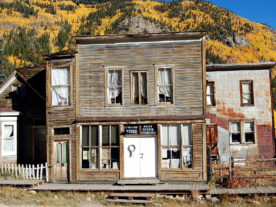
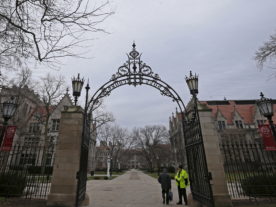

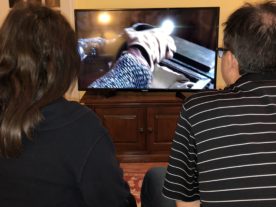





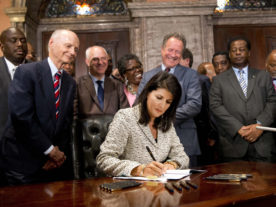

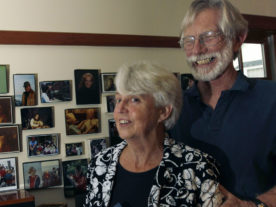


I wanted to say that I thoroughly enjoyed your article and additionally was well educated. I had no idea that many of our fire stations are on a volunteer status.
I had a couple of colleagues when I was at the University in Fairbanks, a Husband and Wife team that were “drop in” firefighters (drop-in=air dropped) I had a ton of respect for them, went to their work outs a few times and WOW, those two stayed in shape for sure. My nephew is currently a firefighter, just graduated about a year ago now.
I have a ton of respect for fire fighters whether they are paid or not, this is the rare breed of individual who “Risks their lives for perfect strangers”
Kudo’s on a great article, and thank you for the education, which is ever-so-much appreciated!